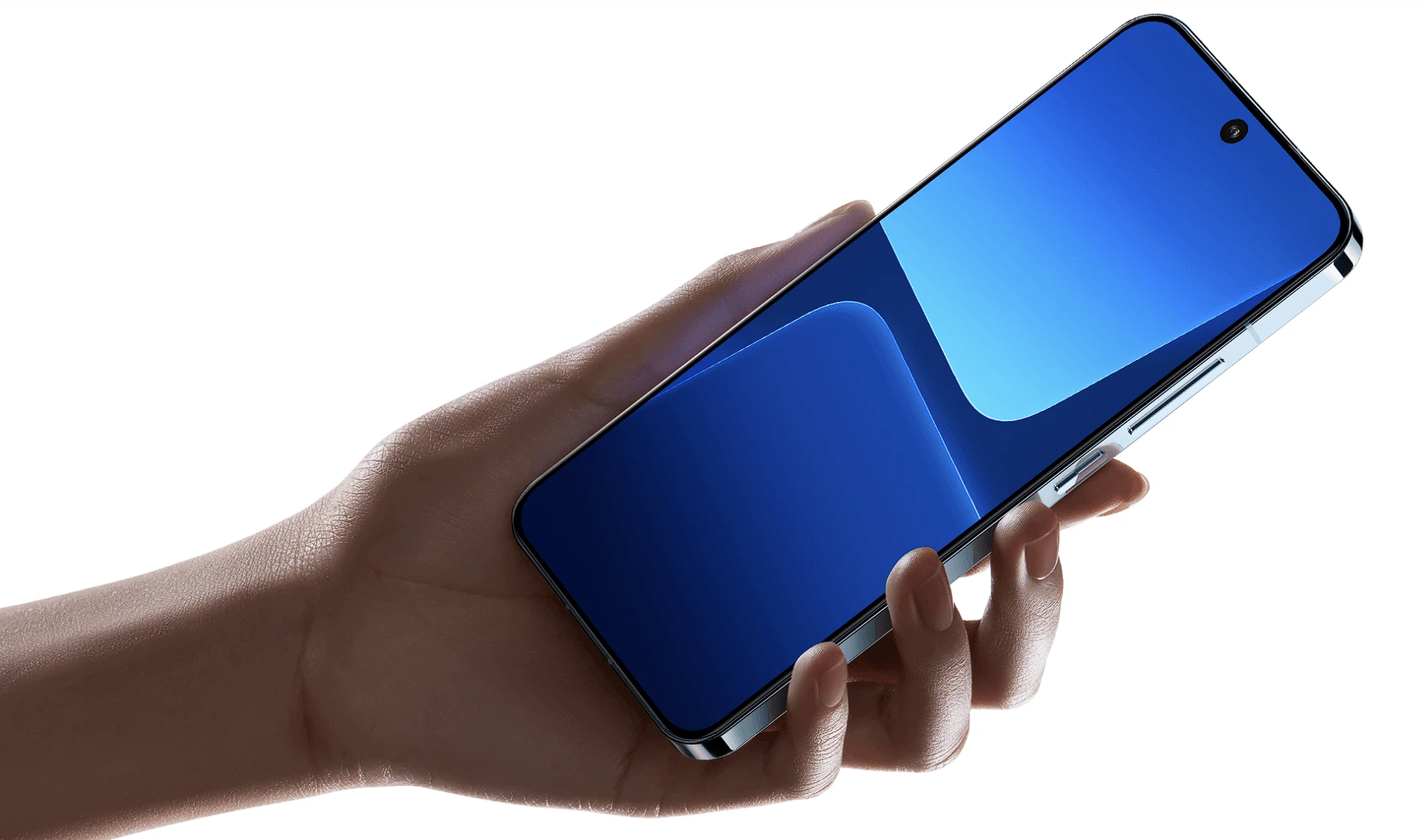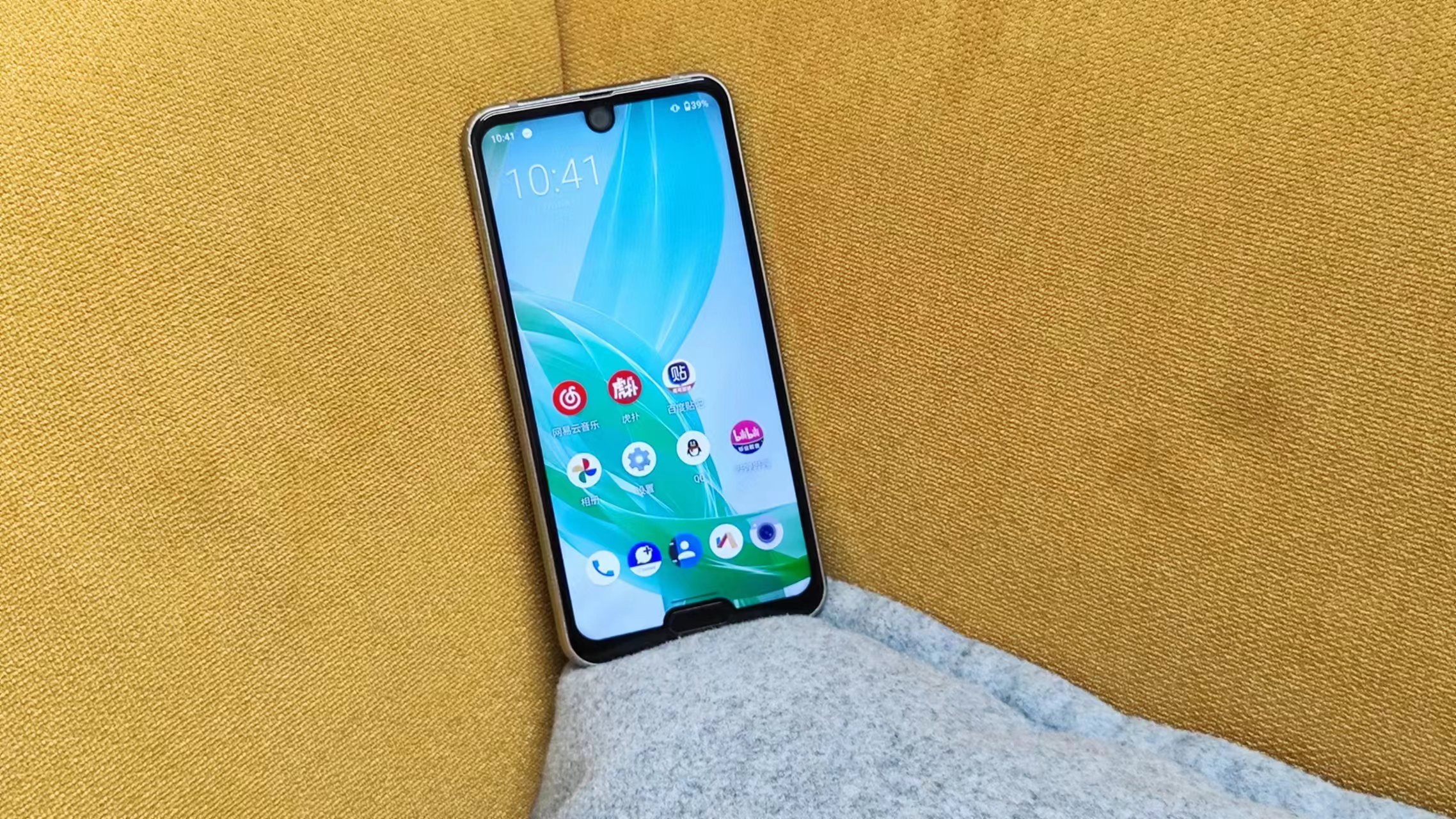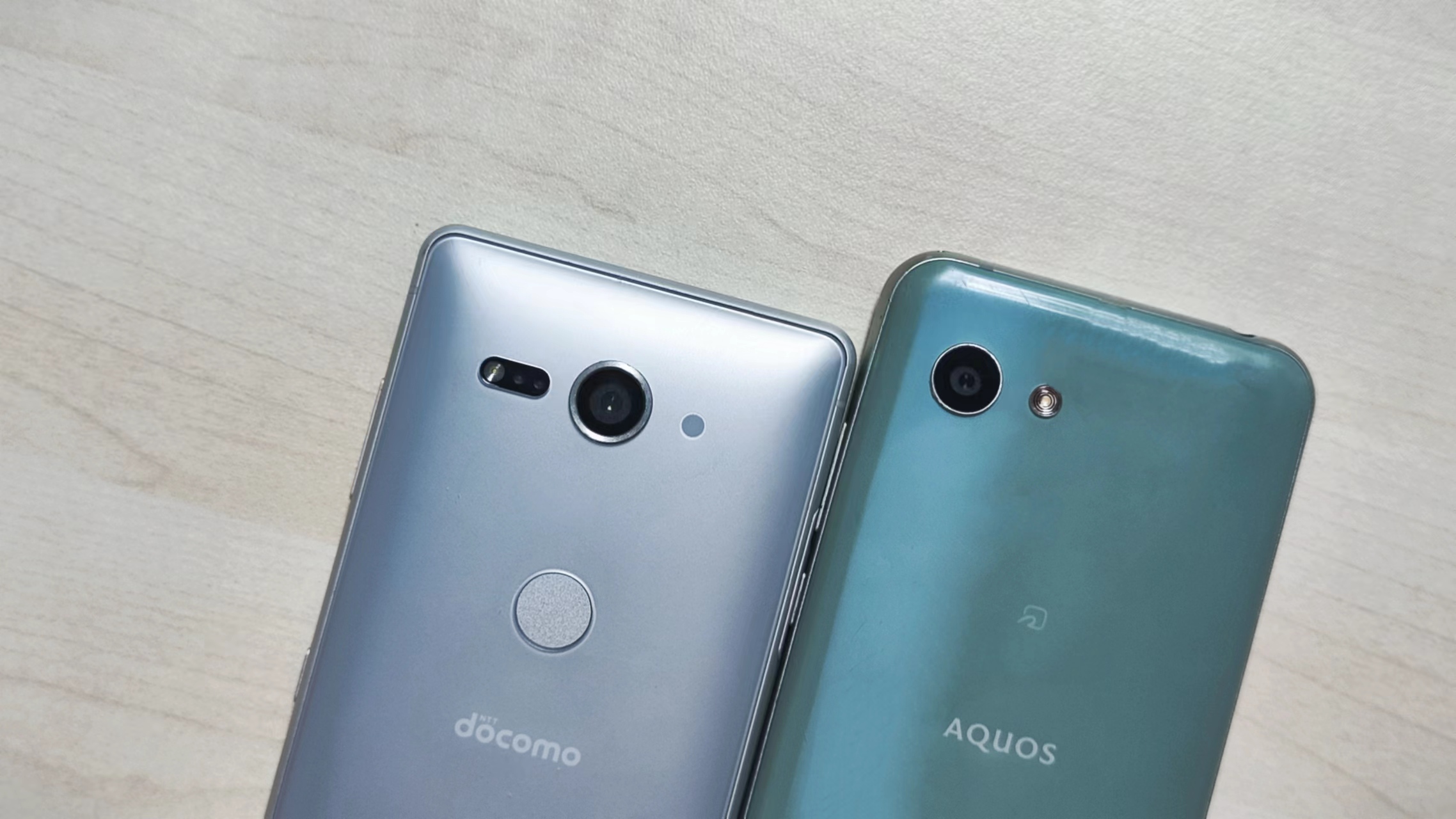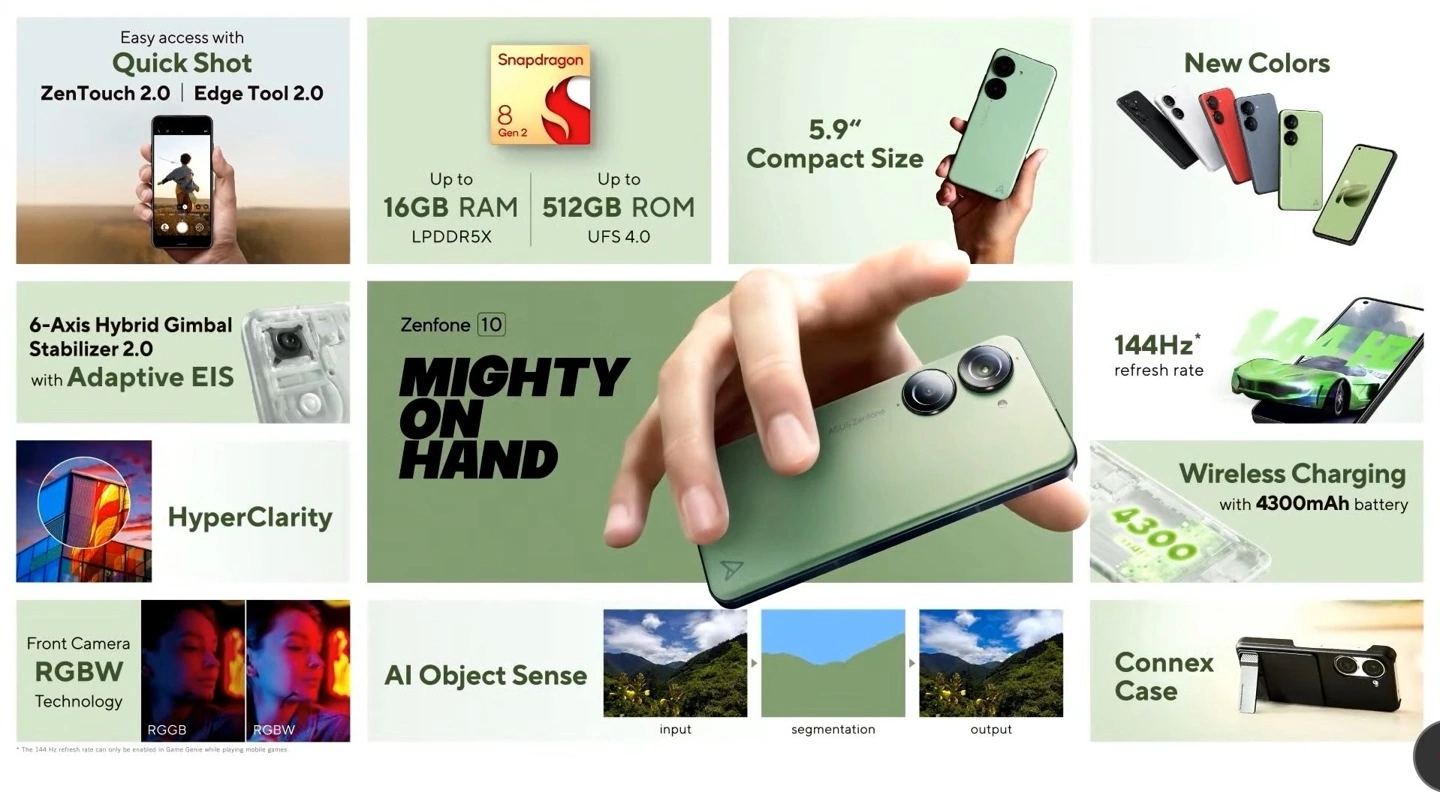 Hardware Tutorial
Hardware Tutorial
 Hardware Review
Hardware Review
 Reliving summer youth: Small-sized flagship phone takes me back to five years ago
Reliving summer youth: Small-sized flagship phone takes me back to five years ago
Reliving summer youth: Small-sized flagship phone takes me back to five years ago
Stephen Jobs once said, "3.5 inches is the golden size of a mobile phone. A larger screen is extremely stupid."
What's interesting is that one year after Jobs's death, the new iPhone 5 series is very popular. Quickly shattered his point with a 4-inch screen.
As people’s demand for audio-visual entertainment continues to increase, small-screen mobile phones are indeed becoming less and less popular nowadays.
Looking back on the first half of this year, the only Android mobile phones that can be called small-screen phones are Samsung Galaxy S23 and Xiaomi 13. Among them, Xiaomi 13 is also due to a larger direct screen and various aspects. They all have a bucket-like experience and have become a new generation of nail households among netizens.

(Photo source: Xiaomi)
However, this is obviously wrong.
With its 6.36-inch screen, can Xiaomi Mi 13 really be considered a small-screen phone? How has it become the representative of contemporary small-screen phones?
It’s already 2023. Apart from ASUS Zenfone 10, is it possible that no manufacturer can make a serious 5.X-inch “real” small-screen flagship?
With such doubts, I bought two classic small-screen flagships that are very popular in the second-hand market.

(Source: Lei Technology Self-made)
One of them , is the Xperia Z2C from Sony, the last 5-inch flagship phone launched by Sony Mobile.
The other one is the AQUOS R2 Compact from Sharp, the last product of Sharp’s Compact series.
After these two products, although there will still be several small-screen mobile phones on the market, these products generally no longer use flagship processors, and their screen sizes are also larger. Boldly come to six inches, even to the point of 6.3 inches.
Why are small-screen flagship phones in the traditional sense extinct here? And can these classic small-screen mobile phones still be used as main phones today? In order to figure out this problem, I put down the Xiaomi Mi 12s and made these two products my main phones.
Old rule, look at the appearance first.
Since they are both called Compact series, “small screen and compactness” must be the core selling points of these two products.




After all, they were all small-screen flagship products of the year. Sony XZ2C/Sharp AQUOS R2 naturally used the flagship processor of the year-Snapdragon 845, paired with 4GB LPDDR4x memory and 64GB UFS 2.1 flash memory. The configuration depends on the It looks quite presentable.
Putting it on AnTuTu, Sony XZ2C ran 48w points, Sharp AQUOS R2 ran 46w points, and the theoretical running score of the current mainstream mid-range processor Snapdragon 778G is 51w points.

(Source: Lei Technology Self-made)
I have to say , the flagship nearly 5 years ago, it was also a flagship.
Of course, the running scores are just like the one shown in Figure 1. With the traditional cross-span heat dissipation of Japanese mobile phones, these two machines cannot even play "League of Legends Mobile" and "Honor of Kings" smoothly. Basically, Every time in the middle of a fight, there will be flow interruptions or team fight freezes due to overheating.
If I really want to say that the games that are suitable for these two are "Azur Lane" and "Princess Link".
As for "Genshin Impact"?

(O God, start! Source: Lei Technology Self-made)
It is recommended to download Meituan, which contains "Yun Yuanshen", that one is still acceptable.
# Of course, the heat dissipation and the stretching are quite smooth in daily life. The native-like system is not only light and simple, but also smooth and comfortable to use. Sony's unique Xperia Loop animation further improves the look and feel of the phone in daily use.

(Photo source: Self-made by Lei Technology)
is native to Google A series of applications that domestic users may not be used to.
As for the audio and video aspect...
Although the screen quality of both mobile phones is very good, I personally think that no one would choose to watch high-definition blockbusters on a 5.0" screen, right?
That should be the case, right?

(Photo source: Self-made by Lei Technology)
I can’t watch movies, but there is still no problem listening to music.
Thanks to the positioning of flagship phones, both products have dual speakers. Among them, Sharp’s dual speakers have too small sound on the earpiece side and can basically only play music - but it has a 3.5mm headphone jack; and Sony The XZ2C’s dual speakers are not very effective, and are indistinguishable from the speaker capabilities of today’s standard flagship phones, which is an unexpected surprise.


## It’s just the hardware disadvantage that makes the images of the two products... just so-so:


## (Source: Lei Technology Self-made) 
Of course, you may say: “What’s the problem with this? Just scan the code. ”
Hey, in fact, you really can’t scan the QR code.
After my own actual testing, I found that at three distances To identify five QR codes at different angles, Sharp AQUOS R2 takes an average of 5-6 seconds to complete the focusing, recognition and jump of one QR code. Sony XZ2C is relatively faster because of its slightly better focus, but it also takes It takes about 4 seconds to complete.
In the "those three years", at this speed, you would have to queue up to scan the QR code, and there would be a long queue behind you.
In addition to scanning the QR code, another dissuasion point for these two mobile phones is the signal problem.
The use of Snapdragon 845 processor means These two products only support 4G networks.
In a country where 5G networks are constantly popularizing, this means a constantly attenuating network foundation. Coupled with the usual collapsed antenna design of Japanese mobile phones, the signal performance of the entire machine can be said to be unsightly.
In the past few days that I have been using them, the daily routine of these two mobile phones is - cut off.
In the lobby of the park, the traffic is cut off.
At Guangzhou East Railway Station, the traffic is cut off.
In the subway or elevator, there is no signal at all.

I can only say that fortunately Xiao Lei still carries a smart watch with him and can use NFC Get out of the station, otherwise it would be really embarrassing to get stuck at the subway entrance.
As for battery life...
Sharp Aquos R2C is equipped with a 2500 mAh battery and supports 18W QC 3.0 fast charging; Sony XZ2C is equipped with a 2870 mAh battery. Supports 18W QC 3.0 fast charging.
Due to the 120-frame refresh rate, the battery life of Sharp Aquos R2C is far worse than that of Sony XZ2C. The difference in regular battery life between the two is more than an hour - but the combined battery life of these two machines is even that of Xiaomi. Even 12S/Xiaomi 13 can’t keep up.
When I walked outside for more than three hours and looked at two mobile phones with black screens and looked at each other.

(Photo source: Lei Technology Self-made)
That kind of embarrassment The feeling is absolutely indescribable.
We often say that the selling point of a small-screen flagship lies in its appearance and feel.
On these two points, Sharp Aquos R2C and Sony XZ2C both do very well.
The light green acrylic back cover and the lightweight body of 135g make the Sharp Aquos R2C almost invisible in the hand; the frosted sterling silver glass body and the textured body of 168g make the Sony XZ2C feel... It has a refreshing look and feel, which is a visual and auditory enjoyment for us who have long been accustomed to seeing the same mobile phones today.

(Source: Lei Technology Self-made)
Based on small screen With flagship positioning, the core configurations of the two products are still available today. Coupled with the inexpensive second-hand prices, they are perfect for use as backup machines.
The problem is that both manufacturers have sacrificed a lot for this "Compact" concept. Screen, audio, video, charging, almost all configurations were different from the mainstream flagship mobile phones at the time. Even because of the "Compact" positioning, the price was even more expensive.
Thinking about it this way, it seems very reasonable for the "real" small-screen flagship to disappear.
Some people may ask, with today's rapid technological advancement, can the embarrassing situation of "real" small-screen flagships be solved?

(Source: Lei Technology Self-made)
The answer is true No, take ASUS Zenfone 10 as an example. In order to pack the leading flagship configuration of Snapdragon 8 Gen2 into a 5.9-inch body, this product can only use the traditional thick-framed small screen, simple dual-camera module, The battery/charging configuration is lagging behind at the same level, but the starting price of the 8 128GB version is 799 euros (discounted 6320 yuan).
In fact, the prices of other small-screen flagships overseas are similar. The price of Xiaomi 13 starts at 999 euros (discounted 7878 yuan), and the price of Samsung S23 starts at 929 euros (discounted 7331 yuan). The price of iPhone 14 starts at 1,099 euros (discounted 8,673 yuan).
Only the price leadership thing has been inherited intact.

(Source: ASUS)
The most important thing Unfortunately, for the small screen enthusiasts, these products are still considered “off track”.
The "real" small-screen flagship they want is preferably one with the screen of Meizu 18s, the external amplifier of LG G7, the rounded feel of Sony XZ2C, and Apple's self-developed The ultimate performance of the processor and the battery life of at least one charge a day, the final price cannot exceed 1,999 yuan.
As for whether such a thing is possible.

(Source: Blade Ya)
I can only say, "Small screen party" never cares!
The above is the detailed content of Reliving summer youth: Small-sized flagship phone takes me back to five years ago. For more information, please follow other related articles on the PHP Chinese website!

Hot AI Tools

Undresser.AI Undress
AI-powered app for creating realistic nude photos

AI Clothes Remover
Online AI tool for removing clothes from photos.

Undress AI Tool
Undress images for free

Clothoff.io
AI clothes remover

Video Face Swap
Swap faces in any video effortlessly with our completely free AI face swap tool!

Hot Article

Hot Tools

Notepad++7.3.1
Easy-to-use and free code editor

SublimeText3 Chinese version
Chinese version, very easy to use

Zend Studio 13.0.1
Powerful PHP integrated development environment

Dreamweaver CS6
Visual web development tools

SublimeText3 Mac version
God-level code editing software (SublimeText3)

Hot Topics
 1386
1386
 52
52
 Reliving summer youth: Small-sized flagship phone takes me back to five years ago
Dec 28, 2023 am 08:42 AM
Reliving summer youth: Small-sized flagship phone takes me back to five years ago
Dec 28, 2023 am 08:42 AM
Stephen Jobs once said, "3.5 inches is the golden size of a mobile phone. A larger screen is extremely stupid." Interestingly, one year after Jobs's death, the new iPhone5 series quickly defeated him with a 4-inch screen. View. As people's demand for audio-visual entertainment continues to increase, small-screen mobile phones are indeed becoming less and less popular nowadays. Looking back on the first half of this year, the only small-screen phones in the entire Android mobile phone market may really be the Samsung Galaxy S23 and Xiaomi 13. Among them, the Xiaomi 13 has a larger straight screen and a bucket-like experience in all aspects. It has become a new generation of nail households among netizens. (Source: Xiaomi) However, this is obviously wrong. With a 6.36-inch screen, Xiaomi Mi 13 can really be considered a small-screen phone
 Warcraft Exploration Server: The world's first Bengal tiger dropped? How to obtain decryption
Mar 05, 2024 pm 06:00 PM
Warcraft Exploration Server: The world's first Bengal tiger dropped? How to obtain decryption
Mar 05, 2024 pm 06:00 PM
The ultra-rare mount Bengal Tiger, which has only appeared once in the official server, has been added to the database of the World of Warcraft Exploration Server. Unexpectedly, some American players immediately claimed to have obtained the first Bengal tiger in the World of Warcraft Exploration Server! Driney, a member of Liquid, a famous guild in the American server of World of Warcraft, said that he discovered how to obtain the Bengal Tiger in the exploration server and said that he is very good at playing in the exploration server. Driney posted his evidence. This picture is a drop picture. You can see the Bengal tiger icon, but his mouse did not move to the avatar to view the detailed information, and there is no photo of him riding a mount. Surrounded by the carcasses of two turtles, they must have dropped the Bengal tiger. In order to prove himself, Driney also posted his own DPS map and claimed that he spent 72
 Gee, I bet you have never seen this small-screen mobile phone.
Feb 28, 2024 pm 09:55 PM
Gee, I bet you have never seen this small-screen mobile phone.
Feb 28, 2024 pm 09:55 PM
Nowadays, when you think of "small screen mobile phones", what do you think of? If you are an iOS user, you may think of the iPhone mini and iPhone SE series that have been discontinued for many years; and if you are an overseas Android fan, the Samsung Galaxy S series and Pixel A series may be the first mobile phone series that come to mind. As for the domestic Android party, Xiaomi 12/13/14 may be the product that best meets this positioning. (Source: Google) However, in Xiao Lei’s view, these mobile phones above can at best be called “relatively small screens” rather than “absolutely small screens”. You know, even the Samsung Galaxy S24 is equipped with a 6.2-inch direct screen Pixel8a? 6.1-inch straight screen. Xiaomi 14? That's even more coming
 'Freedom Football' nostalgic server information, club activity gameplay revealed!
Feb 28, 2024 pm 07:01 PM
'Freedom Football' nostalgic server information, club activity gameplay revealed!
Feb 28, 2024 pm 07:01 PM
In "Free Football", the club is not only a platform to gather like-minded players, but also an important channel for players to obtain unique gaming experience and generous benefits. Today, we will take you to deeply explore the club activity gameplay in the classic version to make your gaming journey more exciting! 1. Overview of club activities Open the club activity center interface, and you will see various activity information carefully planned by the system. During specific event periods, you only need to tap the event button in the lower right area of the competitive mode lobby to quickly enter the event room and fight side by side with your club partners. 2. Unique gameplay is waiting for you to challenge. Club activities encourage close cooperation among players. You can team up with club members to challenge special 3V3 cage battles, half-time goalless battles, and 1on1 fun duels.
 Explore the mystery of the constellations and start an adventure, 'Stardust Legend' is launched today!
Jan 31, 2024 pm 01:45 PM
Explore the mystery of the constellations and start an adventure, 'Stardust Legend' is launched today!
Jan 31, 2024 pm 01:45 PM
Today at 14:00, a new version of "Stardust Legend" is launched! "Stardust Legend" (Luvinia Online) is a constellation-themed 3D large-scale MMORPG game. It has been successfully operated in the United States, South Korea, Japan and other countries and regions and has been warmly welcomed by players. It has become a game with global influence. A powerful large-scale online game. The game uses the vast world of constellations as the background, showing a fantasy game world. It designs rich content elements and diverse gameplay around the innovative constellation theme, and focuses on features such as nostalgia, fantasy, and easy social interaction. Four major features give you a unique adventure! 1) Strong social background: The unique constellation theme full of fairy tale colors "Stardust Legend" is mainly based on the fresh and bright Japanese animation style, with rich
 Nostalgia Monthly Report: Recruitment for the first beta test of the Warcraft national server has begun! A number of new, nostalgic games for old games are scheduled to be released in May
May 01, 2024 am 09:16 AM
Nostalgia Monthly Report: Recruitment for the first beta test of the Warcraft national server has begun! A number of new, nostalgic games for old games are scheduled to be released in May
May 01, 2024 am 09:16 AM
No one would have thought that the combination of NetEase and Blizzard could cause a sudden change in the domestic nostalgia market. Major game manufacturers have exerted their efforts and have to advance the annual "Summer Showdown" to May, taking advantage of the resumption of the Warcraft national server to harvest the last wave of Blizzard's absentee traffic. Today, let us review the nostalgia market in April and look forward to the nostalgia war in May. NetEase and Blizzard have successfully reunited. Recruitment for the national version of Warcraft has begun. At 10:00 on April 10, NetEase officially announced a broader partnership with Blizzard and Microsoft, and promised to bring "World of Warcraft" and "World of Warcraft" to the game starting this summer. Games such as "Hearthstone" and "Diablo" are brought back to the Chinese server to give players a better gaming experience. But uncles in various circles began to reveal that Warcraft
 Relive your youth: experience the fun of nostalgic 'Hope OL'
Jan 15, 2024 pm 08:18 PM
Relive your youth: experience the fun of nostalgic 'Hope OL'
Jan 15, 2024 pm 08:18 PM
"Hope OL" is a 3D cartoon online game that cleverly combines classic feelings with innovative gameplay, bringing players into a world that is both familiar and full of surprises. In Hilt Continent, you can forget all your worries and troubles and enjoy the fun of free gaming. As the new year is approaching, some criminals have appeared in "Hope OL" pretending to be official identities to ask for account information, or using slogans such as low prices and offline transactions to defraud property. Here, we solemnly remind all adventurers that official staff will not ask for adventurers' "game passwords" in any form. At the same time, adventurers are requested to keep their own account information and do not share accounts. The problem of plug-ins has always been the focus of "Hope OL". Although the new year is approaching, we will not relax and will continue to adopt new products in the future.
 World of Warcraft Classic Server: It's really a 'cold meal”, Blizzard announced that it will restart on February 29th!
Feb 23, 2024 am 09:37 AM
World of Warcraft Classic Server: It's really a 'cold meal”, Blizzard announced that it will restart on February 29th!
Feb 23, 2024 am 09:37 AM
Blizzard announced that the hardcore season single-player mode will be launched on February 29th. The hardcore season itself is a niche game, and it went out of play within a week of its launch. Now that a single-player mode has been added, it’s really a “fried meal”. This kind of gameplay itself is not suitable for ordinary players. Even if the national server is still open, no one plays this mode, let alone the national server is closed. The current Blizzard designers are really fooled by American server players.



